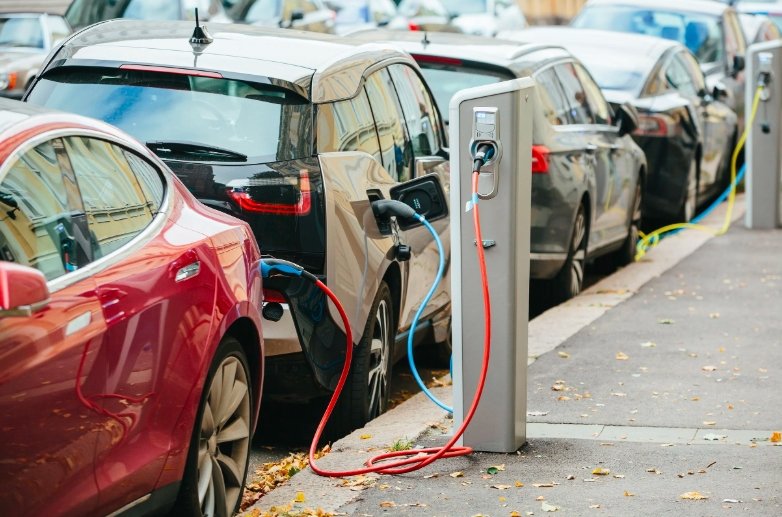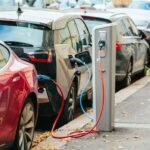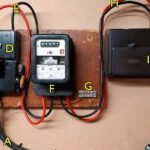A group of six new electric vehicles faced off in a grueling real world range test organized by Carwow, driving from Oxford in England all the way toward Scotland to see which one could go the farthest on a single charge. The test pitted Chinese brands against established players from Europe, South Korea, and the United States, revealing surprises in efficiency and performance under demanding motorway conditions.
The journey highlighted how electric car range test results can differ from official claims, especially on long hauls with varied weather and speeds. Drivers used eco modes and kept to the speed limit to stretch every mile, while a powerful petrol Audi RS Q8 tagged along for comparison, showing the gap in running costs between EVs and traditional engines.
Test Setup and the Cars Involved
The Carwow team selected six electric SUVs, each in their longest range configuration, to represent a mix of global manufacturers. They started with full charges overnight and drove north on the M1 motorway at 70 mph, switching to side roads only when batteries ran low. This setup mimics a typical family road trip, factoring in real world elements like rain and hills.
The lineup included affordable Chinese options like the Leapmotor C10 and XPeng G6, alongside the BYD Sealion 7. European and Korean entries were the Skoda Enyaq Coupe and Kia EV3, with the Tesla Model Y as the American contender. Prices ranged from about 36,500 pounds for the Leapmotor to 59,000 pounds for the BYD, making it a diverse field for buyers eyeing electric car range on long trips.
Each car brought unique features to the electric car range test. For instance, the Tesla relied on its advanced software for efficiency tweaks, while the Kia focused on a large battery in a compact body. The test aimed to answer key questions for potential EV owners, such as how far these vehicles can truly travel in UK conditions.

Surprising Winner and Close Contenders
The Kia EV3 stole the show in this electric car range supremacy battle, covering 329.1 miles before powering down completely. With its 81.4 kWh battery and a predicted range of 397 miles, it achieved 88 percent of expectations, proving that smart engineering can outperform bigger rivals. Priced from around 42,200 euros, it offers great value for those planning Scotland trips or similar long drives.
Right behind came the XPeng G6 at 328.3 miles from its 87.5 kWh pack, just 7 percent shy of its WLTP claim. This Chinese model impressed with its tech heavy interior, including steering wheel controls for climate, though it felt a bit jiggly on uneven roads. The Tesla Model Y Long Range hit 327.5 miles, leveraging its top efficiency of 4.4 miles per kWh to stay competitive despite a 15 percent shortfall from its 387 mile claim.
These top three cars all made it well past 300 miles, far enough to reach major Scottish cities like Edinburgh from Oxford without stopping. The results underscore a growing trend where newer EVs from Asia are challenging Tesla’s dominance in real world scenarios, especially as battery tech improves in 2025.
Underperformers and Key Insights
Not all vehicles shone equally in the range test. The Leapmotor C10, the cheapest at 36,500 pounds with a 69.9 kWh battery, managed only 224 miles, or 85 percent of its 263 mile WLTP figure. Drivers noted good visibility but criticized the touchscreen only controls and unsettled ride on bumpy sections, suggesting it’s better for urban use than extended motorway runs.
The BYD Sealion 7, with a hefty 90 kWh battery and 59,000 pound price tag, covered 277 miles against a 312 mile claim, hampered by its lowest efficiency of about 3 miles per kWh. While the interior felt premium with comfy seats and a wireless charger, the handling was described as wallowy in corners, and the infotainment lagged behind rivals like the Tesla.
The Skoda Enyaq Coupe landed at 308 miles from its 77 kWh battery, achieving 86.76 percent of its 365 mile estimate for around 46,000 pounds. It offered a natural drive feel and solid bump absorption, but some plasticky bits and a laggy screen detracted from its otherwise refined experience. Overall, the test showed that while no car hit 100 percent of claims, most exceeded 85 percent, a solid mark for electric car range in mixed weather.
To break down the numbers clearly, here is a table summarizing the key stats from the Carwow electric car range test:
| Car Model | Battery Size (kWh) | Claimed Range (miles) | Actual Range (miles) | % of Claimed | Price (approx. GBP) | Efficiency (mi/kWh) |
|---|---|---|---|---|---|---|
| Kia EV3 | 81.4 | 397 | 329.1 | 88% | 36,500 | 4.0 |
| XPeng G6 | 87.5 | 354 | 328.3 | 93% | 45,000 | 3.8 |
| Tesla Model Y | ~79 | 387 | 327.5 | 85% | 45,000 | 4.4 |
| Skoda Enyaq Coupe | 77 | 365 | 308 | 87% | 46,000 | 4.0 |
| BYD Sealion 7 | 90 | 312 | 277 | 89% | 59,000 | 3.0 |
| Leapmotor C10 | 69.9 | 263 | 224 | 85% | 36,500 | 3.2 |
This table highlights how battery size and efficiency play out in practice, with the Kia EV3 balancing both for the win.
Petrol Comparison and Running Costs
The Audi RS Q8, a 4.0 liter twin turbo V8 SUV costing 154,850 pounds, completed the route with ease thanks to its large fuel tank, but at a steep price. While EVs averaged costs of 1.75 to 2.31 pence per mile on home charging, the Audi racked up far more, even with rapid charging for the electrics at 19 to 25 pence per mile.
- EVs like the Tesla and Kia kept total trip costs under 6 pounds at home rates, versus over 50 pounds for petrol.
- Rapid charging added expense but still beat fuel stops for the group.
- Long term, these electric car range test outcomes point to savings of thousands over years, especially with rising fuel prices in 2025.
The test also tied into broader EV trends, like Scotland’s push for electric adoption with up to 20,000 pound interest free loans. Recent events, such as the EU’s updated utility factors for hybrids, further boost pure EVs by closing loopholes on emissions claims.
What This Means for EV Buyers
For anyone considering an electric vehicle, this Scotland journey range test offers practical lessons. Smaller batteries in efficient designs, like the Kia EV3, can outlast larger ones if tuned right, ideal for families doing 300 plus mile trips. Chinese brands showed strong value, but established names like Tesla excel in software and efficiency.
Buyers should weigh real world factors beyond WLTP figures, such as winter range drops or charging access. With EV sales surging 25 percent in the UK this year, tests like this help demystify options and build confidence in going electric.
In the end, no car stranded the drivers far from help, but the Kia EV3’s victory signals a shift toward more accessible long range EVs. Share your thoughts on these results or your own EV experiences in the comments below, and tell us which model you’d pick for your next road trip.


















